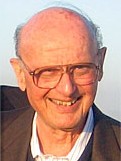-
(b.) - ?1927 August 24
Bio/Description
An American economist, he was awarded the Nobel Memorial Prize in Economic Sciences in 1990 while a professor of finance at Baruch College of the City University of New York. In the preceding year, he received the John von Neumann Theory Prize from the Operations Research Society of America (now Institute for Operations Research and the Management Sciences, INFORMS) for his contributions in the theory of three fields: portfolio theory; sparse matrix methods; and simulation language programming (SIMSCRIPT). Sparse matrix methods are now widely used to solve very large systems of simultaneous equations whose coefficients are mostly zero. SIMSCRIPT has been widely used to program computer simulations of manufacturing, transportation, and computer systems as well as war games. SIMSCRIPT (I) included the Buddy memory allocation method, which he also developed. He co-founded the company that would become CACI International along with Herb Karr on July 17, 1962 as California Analysis Center, Inc. They helped develop SIMSCRIPT, the first simulation programming language, at RAND and after it was released to the public domain, CACI was founded to provide support and training for SIMSCRIPT.
Born in Chicago, he developed an interest in physics and philosophy during high school. In particular he was interested in the ideas of David Hume, whom he continued to follow during his undergraduate years at the University of Chicago. After receiving his B.A., he decided to continue his studies at the University of Chicago, choosing to specialize in economics. There he had the opportunity to study under important economists, including Milton Friedman, Tjalling Koopmans, Jacob Marschak and Leonard Savage. While still a student, he was invited to become a member of the Cowles Commission for Research in Economics, which was in Chicago at the time. He chose to apply mathematics to the analysis of the stock market as the topic for his dissertation. While researching the then current understanding of stock prices, which at the time consisted in the present value model of John Burr Williams, he realized that the theory lacks an analysis of the impact of risk. This insight led to the development of his seminal theory of portfolio allocation under uncertainty, published in 1952 by the Journal of Finance. In 1952, he went to work for the RAND Corporation, where he met George Dantzig, with whose help, he continued to research optimization techniques, further developing the critical line algorithm for the identification of the optimal mean-variance portfolios, lying on what was later named the Markowitz frontier. In 1955, he received a Ph.D. from the University of Chicago with a thesis on the portfolio theory. The topic was so novel that, while he was defending his dissertation, Milton Friedman argued his contribution was not economics. During 1955-1956 he spent a year at the Cowles Foundation, which had moved to Yale University, at the invitation of James Tobin. He published the critical line algorithm in a 1956 paper and used this time at the foundation to write a book on portfolio allocation which was published in 1959. He now divides his time between teaching (he is an adjunct professor at the Rady School of Management at the University of California at San Diego, UCSD); video casting lectures; and consulting (out of his Harry Markowitz Company offices). He also co-edited the textbook The Theory and Practice of Investment Management with Frank J. Fabozzi of Yale School of Management.
-
Date of Birth:
1927 August 24 -
Gender:
Male -
Noted For:
Co-developer of SIMSCRIPT, the first simulation programming language -
Category of Achievement:
-
More Info:


